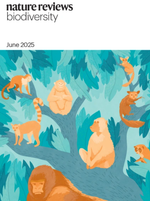Epidemiology and Global Health
Hugo G Castelán-SánchezLuis DelayeRhys PD InwardSimon DellicourBernardo GutierrezNatalia Martinez de la VinaCelia BoukadidaOliver G PybusGuillermo de Anda JáureguiPlinio GuzmánMarisol Flores-GarridoÓscar FontanelliMaribel Hernández RosalesAmilcar MenesesGabriela Olmedo-AlvarezAlfredo Heriberto Herrera-EstrellaAlejandro Sánchez-FloresJosé Esteban Muñoz-MedinaAndreu Comas-GarcíaBruno Gómez-GilSelene ZárateBlanca TaboadaSusana LópezCarlos F AriasMoritz UG KraemerAntonio LazcanoMarina Escalera Zamudio (2023) Comparing the evolutionary dynamics of predominant SARS-CoV-2 virus lineages co-circulating in Mexico eLife 12:e82069. https://doi.org/10.7554/eLife.82069
View Journal Article / Working PaperOver 200 different SARS-CoV-2 lineages have been observed in Mexico by November 2021. To investigate lineage replacement dynamics, we applied a phylodynamic approach and explored the evolutionary trajectories of five dominant lineages that circulated during the first year of local transmission. For most lineages, peaks in sampling frequencies coincided with different epidemiological waves of infection in Mexico. Lineages B.1.1.222 and B.1.1.519 exhibited similar dynamics, constituting clades that likely originated in Mexico and persisted for >12 months. Lineages B.1.1.7, P.1 and B.1.617.2 also displayed similar dynamics, characterized by multiple introduction events leading to a few successful extended local transmission chains that persisted for several months. For the largest B.1.617.2 clades, we further explored viral lineage movements across Mexico. Many clades were located within the south region of the country, suggesting that this area played a key role in the spread of SARS-CoV-2 in Mexico.




